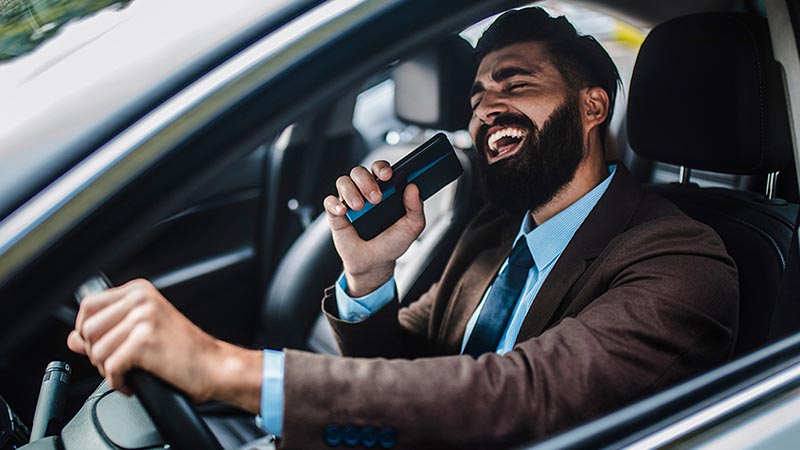Driving rates plunged during the pandemic, and although they haven’t quite returned to pre-pandemic levels, more people are on the road, especially now that summer is here. And this means that road safety remains a critical concern.
One of the critical factors in ensuring safe roads is driver alertness. For example, teens ages 16 to 19 are at the highest risk of causing car accidents due to both inexperience and distracted driving. And now, with rapid advancements in technology, there is also a growing concern regarding the impact of new technology on driver attentiveness.
All this begs the question: Are drivers becoming distracted by this technology? The answer may be more complex. Let’s explore the role of new technology in distracted driving and strategies that can help drivers stay alert on the road.
The Role of New Technology in Distracted Driving
Car manufacturers have used advanced driver assistance systems (ADAS) since the 1970s. But what started as anti-lock brakes has since revolutionized the driving experience. These modern systems, such as lane departure warning, adaptive cruise control, and collision avoidance offer convenience and safety benefits.
However, they also pose potential distractions. For instance, relying too heavily on lane-keeping assist may lead to reduced attention to the road, or using voice-activated controls can divert focus away from driving. Statistically, any activity other than concentrating entirely on driving can be a distraction—even listening to the radio.
According to research by the AAA Foundation for Traffic Safety, drivers using ADAS features were considered “disengaged” and thus more prone to distractions, resulting in delayed reaction times. This research emphasizes the need for drivers to remain vigilant and aware of the potential distractions posed by new technology.
GPS and In-Car Navigation Systems
GPS and in-car navigation systems have changed how we navigate—for drivers, pedestrians, cyclists, and public transportation. These tools provide generally accurate and real-time navigation, helping travelers reach their destinations efficiently and effectively.
While it wasn’t long ago that navigating meant pulling over and consulting a map, in-car navigation integrates turn-by-turn directions into the driving experience. With features such as lane guidance, traffic updates, and speed limit notifications, these systems have plenty to offer to enhance safety on the road. They also contribute to time saved and fuel efficiency, as drivers can choose the most optimal routes and avoid traffic congestion.
While GPS and in-car navigation systems offer tremendous advantages, they can also contribute to distracted driving. Drivers may become overly reliant on these systems and less attentive to driving.
The visual and auditory cues provided by navigation systems can divert drivers’ attention from the road, potentially leading to delayed reaction time and an increased risk of accidents. Moreover, inputting destinations or adjusting navigation settings while driving can increase distraction.
Strategies to Stay Alert While Driving
To counteract potential distractions, drivers can adopt various strategies to stay alert on the road. Minimizing distractions inside the vehicle is crucial. First, limiting phone usage and app notifications can significantly reduce distractions.
Using hands-free functions for essential calls and avoiding texting or online browsing while driving is advisable. Second, adjusting infotainment system settings, such as pre-selecting music or setting GPS directions before the journey can minimize distractions and help you maintain focus on the road.
Monitoring driver behavior is another practical approach. Driver monitoring systems, often integrated into newer vehicles, track driver behavior and provide alerts for drowsiness, distraction, or loss of focus. These systems can serve as a valuable reminder to stay attentive. Fatigue detection and warning systems analyze driving patterns and issue alerts, prompting drivers to take breaks.
Good driving habits ensure drivers are well-prepared and less prone to fatigue. Taking breaks during long drives is essential to combat tiredness. Experts recommend stopping every two hours or every 100 miles to stretch, hydrate, and re-energize. Engaging in defensive driving techniques, such as maintaining a safe following distance, staying aware of sightline impediments, and anticipating hazards helps keep drivers engaged.
The Role of Regulation and Policy
Regulation and policy must keep pace with technological advancements to effectively address driver distractions. Current regulations mainly focus on the use of handheld devices while driving, but they may not sufficiently cover the distractions caused by in-vehicle technology. Updated regulations are needed to address these concerns and establish clear guidelines for safe technology use.
Collaboration between automakers, policymakers, and tech companies is crucial in establishing comprehensive safety guidelines. By working together, these stakeholders can develop industry standards prioritizing driver attentiveness while allowing for technological advancements. Additionally, policymakers should consider funding research to understand the impact of new technology on driver behavior and use the findings to inform evidence-based regulations.
What’s Next?
While new technology undoubtedly offers numerous benefits for drivers, it also poses challenges in terms of driver attentiveness. Drivers need to recognize potential distractions and take proactive measures to stay alert on the road.
By minimizing distractions, using technology to enhance attentiveness, practicing good driving habits, promoting education and awareness, and implementing updated regulations we can balance technology use and driver alertness.
